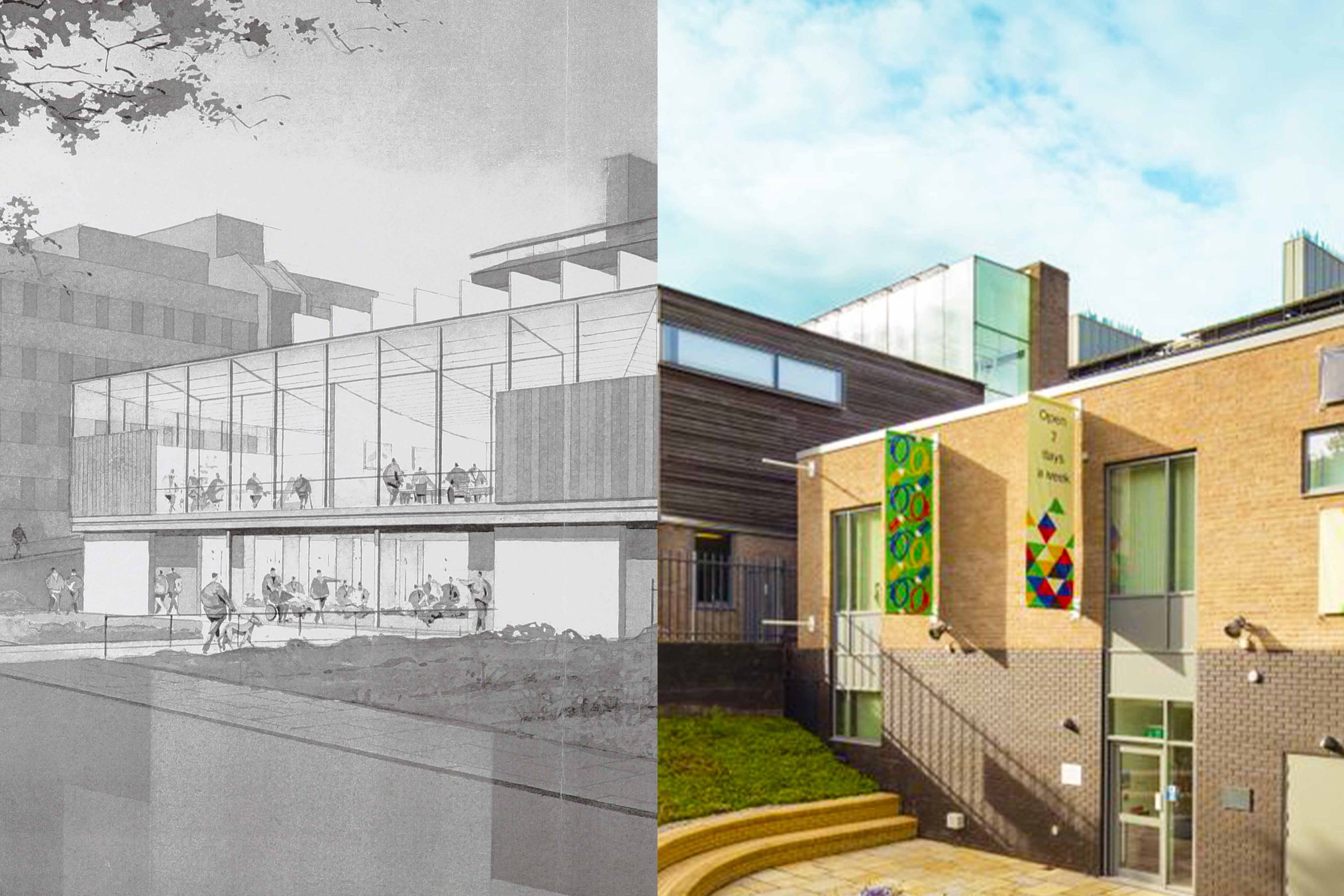Our History
Attenborough Arts Centre was established in 1997 by Lord Richard Attenborough, who had a passionate belief in social justice and in widening access to arts and culture for everyone in society.

The work of Attenborough Arts Centre started in the late 1970s when a group of local artists started running art classes in rooms at the University of Leicester, including in the basement of the Percy Gee building.
Led by Alan Caine, a curriculum of art classes was established, gaining a loyal following. Accessibility was an important consideration from the beginning. When Lord Attenborough began the campaign to create Attenborough Arts Centre at the University, Alan Caine and his fellow tutors were closely involved in developing the plans for the new building, led by inaugural director, Eleanor Hartley. The classes then took residence at Attenborough Arts Centre and have continued to become the Creative Courses programme we know today! Some of our original tutors are still teaching with us and make a hugely valuable contribution to the ongoing life of Attenborough Arts Centre.

About Richard Attenborough
Richard Attenborough and his wife Sheila Sim were two of the original cast members of Agatha Christie’s The Mousetrap which opened in 1952 at the Ambassadors Theatre and ultimately became the world’s longest running stage production.
Richard Attenborough earned his way to stardom as a film actor by starring in many now classic films such as Brighton Rock (1948), The Great Escape (1963) and Jurassic Park (1993). As a producer and director he was prolific, his seminal films including Oh! What a Lovely War (1969), Cry Freedom (1987) and Shadowlands (1993). He is perhaps best known for directing Gandhi (1982), which won 8 Academy awards including Best Director and Best Picture.
Lord Attenborough was a frequent visitor to and supporter of the University of Leicester throughout his life and was made an Honorary Distinguished Fellow, the University’s highest honour, in 2006.
As well as Lord Attenborough’s work in establishing Attenborough Arts Centre in Leicester, he was President of the Muscular Dystrophy campaign for 33 years, becoming the charity’s Honorary Life President in 2004. He was also the patron of the United World Colleges movement which established schools around the world, championing education that does not judge upon colour, race, creed or religion, including Waterford Kamhlaba United World College in Swaziland where he established the Sheila and Richard Attenborough Fine Arts Centre and the Jane Holland Centre for Creative Learning in memory of his daughter who perished, along with her daughter Lucy, in the 2004 Boxing Day tsunami. Lord Attenborough’s name is also given to the Attenborough Centre for the Creative Arts at the University of Sussex, after his former role as Chancellor of the University.
